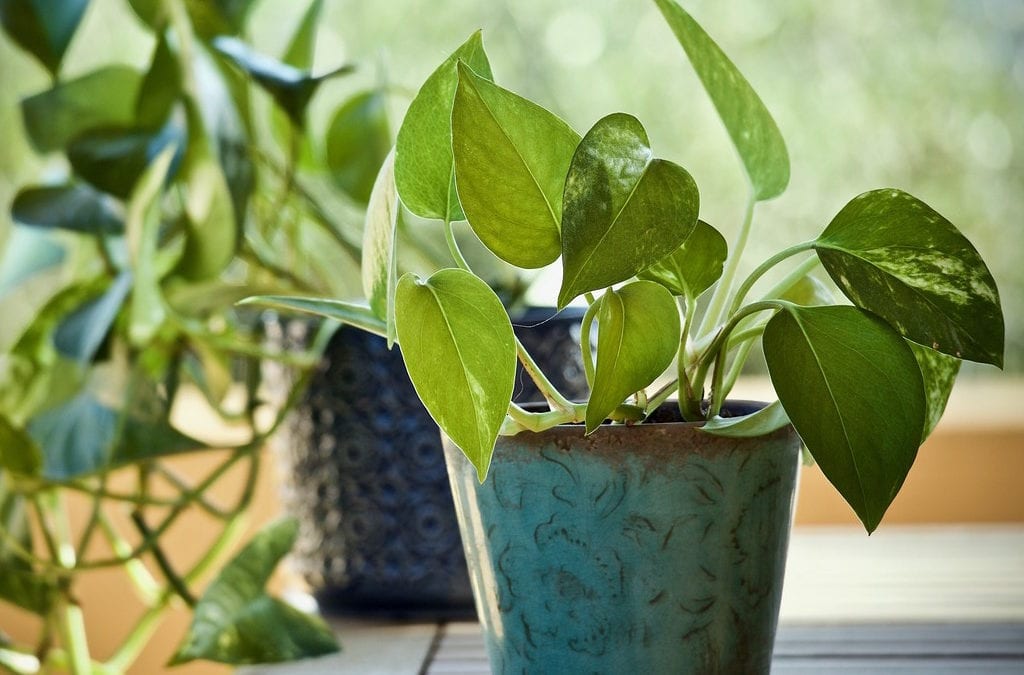When it comes down to the basic care of houseplants, what they need is light, water, well-draining container, potting soil, and the right temperature.
Light for houseplants
- High light plants need to placed directly in east to west facing, windows.
- Medium light plants need to be placed in south facing windows.
- Low light plants need to be placed in north facing windows, or several feet away from windows that are east, west, or south.
- While some houseplants can enjoy some time outside when the weather is warm, never leave them in direct sunlight or they will most likely suffer sunburn.
Light is one of the most important elements that a houseplant needs to grow and remain healthy. Light produces the energy that plants use to produce food. Most houseplants are grouped according to the level of light that they survive and thrive in. Lack of light causes houseplants to either grow leggy (stretching for the light), or decline in vibrancy. Research the houseplants you are choosing and learn their light requirements.
Water for houseplants
- Stick your finger into the soil down to the second knuckle. If it feels dry, water your houseplant. If it feels wet, don’t. It’s really that simple.
- When watering potted plants, which includes houseplants, it’s always best to water until the water runs out the drainage holes at the bottom of the pot. This ensures you have watered the entire root ball of your houseplant.
- If your plants are sitting in saucers to protect your floor surfaces, make sure to empty the saucer no more than a couple of hours after watering. (You don’t want the roots of your plants sitting in water for a long time.)
Water is necessary for all living things to survive. Your houseplants aren’t bookends or novelty items; they are living things. Watering tends to trip people up the most and it really can be one of the easiest things to learn. It just takes awareness and diligence. You need to be consistent with checking the moisture of your houseplants, and you can do so with just your finger.
Containers for houseplants
- Your pots need to have a way for the water to drain so that your houseplants don’t sit in soggy soil and suffer root rot.
- The more drainage holes the better in your pots.
Houseplants can be potted up in all different types of containers. Plastic, pottery, pails, clay, it really doesn’t matter as long as there are sufficient drainage holes in them. Extra holes can be drilled in most of these if needed (with care).
Potting soil for houseplants
- Do not pack your soil tightly when planting. Soil should be loose and well-draining.
- Do not use topsoil, compost, or soil from the garden in your pots. These products are too heavy and tend to get compacted. Your potted houseplants will suffer.
- Do use quality brand bags specifically labeled “potting mix”. Quality soil gets you quality results for your houseplants.
- Do add a little perlite, vermiculite or peat moss if the mix in the bag still seems a little heavy.
Temperature for houseplants
- The general rule of thumb for temperature of houseplants is to avoid temperatures below 45 degrees. But there could be some plants that are even more sensitive to cold. Be sure to do research on the plant you are buying.
- It’s best if you can keep your houseplants away from drafty spaces, or heat and air conditioning ducts that cause temperatures to fluctuate. But generally, the normal temperatures we have in our homes make for a fine habitat for most houseplants.
Houseplants are mostly native to the tropics so they don’t like or tolerate cold and freezing temperatures.


Trackbacks/Pingbacks